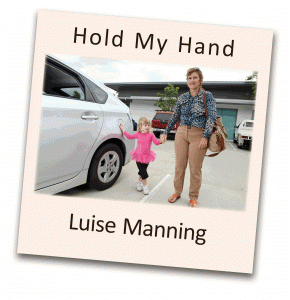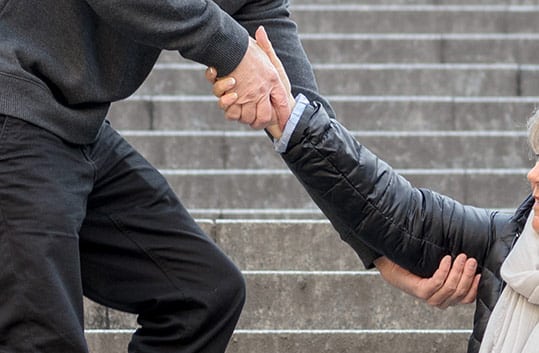I recently received a terrific email from a blog reader in Australia who shares my concern for the safety of people around moving vehicles.
Luise Manning’s mission is to protect children from slow-speed runover accidents, and it is a GREAT CAUSE that gets overlooked in all the other accident news here and abroad.
Children are seriously injured or killed every day when a parent or other loved one accidentally strikes a child while backing out or pulling away. We have all read about these tragedies and our hearts ache for the child or children lost AND the driver!
 Luise has written a book, “Hold My Hand,” that you can learn more about here and has been the subject of a news story because of her Car Angel campaign.
Luise has written a book, “Hold My Hand,” that you can learn more about here and has been the subject of a news story because of her Car Angel campaign.
Be sure to watch the video above to see what her mission is all about. You won’t forget it once you watch it.
Here is the guest blog post from Luise Manning:
5 Steps To Safely Reduce The Risk Of Low-Speed
Vehicle Runovers In Driveways And Parked Cars
1. Supervision is No. 1. Adults are responsible for the safety of young children in and around traffic. It will take many years for young children to make safe decisions independently when there are cars about. Actively supervise children whenever vehicles are known to be moving by holding children’s hands or keeping them close to keep them safe. Sometimes they may not want to hold hands; they want to be independent but often they are not aware of dangerous situations.
2. Know where children are before you move the car! Children are run over by vehicles going forward as well as backing up. Be aware of blind zones – they can occur in front of and behind a vehicle.Get in the habit of walking around the car, checking for children before you get in the driver’s side door in driveways or where cars are parked.
Know where your child is. Don’t assume that they are with another person; check before you go to be sure the child is safe.
If you are alone and a car needs to be moved, protect them by placing them in the car seat prior to moving a vehicle.
When you’re out, be alert and keep a lookout for small children as they often do not respond to warning signals or reverse lights.
A reversing camera or sensor may help you avoid incidents, but young children move quickly and you may not have time to stop.
3. Secure doors and gates! Young children are growing and learning every day – one minute they can’t do something and the next they can! Consider installing self-closing gates, doors and childproof locks on doors to prevent children from opening and accessing areas such as the driveway or garage unnoticed.
4. Create safe places to play away from the garage and driveway. A driveway is actually a small road. Fence off access to driveways, and wherever possible, ensure young children play in an area separated from the driveway. Explain to children why footpaths, roads and driveways are not safe places to play. Talk with children about safe places to play. Always check that doors and gates are closed and can’t be opened by children.
The car is not a play area; keep the doors locked when the vehicle is not in use to prevent children from entering the car. Avoid leaving them to play alone, especially around areas near parked or moving cars.
5. Educate – Don’t wait for school; make some cool rules. Early education is the key to minimize the risk of dangers. While we can teach children about road safety and being careful around cars, parents and other caregivers need to be cautious about expecting a child under 10 years old to be safe consistently. Children get distracted and forget to watch for moving vehicles.
Have some family rules about driveway safety – Wave goodbye from behind a door, not on the driveway. Never let children run ahead of you.
Use simple catchphrases to help establish routines and habits. For example, say: “Stand next to the car,” or “Stay where you are,” or “Hold tight, keep me in sight” to encourage children to practice safe behavior.
Everyone needs to be involved! Praise children when they follow instructions, but lead by example to create lifelong habits. Talk with other adults in your child’s life about your family rules to reduce the risk of injury or death from low-speed accidents.
My thanks to Luise for writing this for our readers all over the world!
Thanks for reading!
Jim
_________________________________


